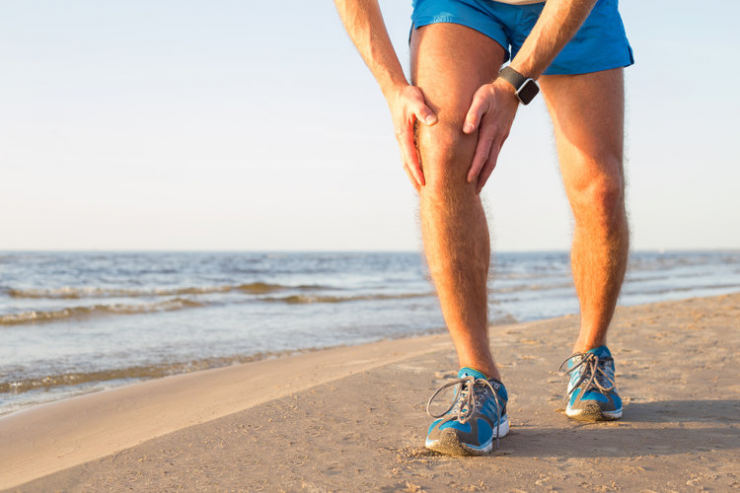Histogenics (NASDAQ:HSGX) expects to complete enrollment by the end of the second quarter this year in a Phase 3 clinical trial of its NeoCart biologic cell therapy and tissue engineering solution for knee cartilage regeneration.
“We believe that if we are successful in this Phase 3 trial, we have the potential to become the new standard-of-care in knee cartilage regeneration,” CFO, Jon Lieber, says in an interview with BioTuesdays.
“We believe that NeoCart is the only product on the market or in development that has a one-year primary endpoint for marketing approval, compared with other products, which based on available data, do not appear to show a difference to microfracture surgery, the standard of care, until well beyond one year,” he adds. “One-year superiority would represent a significant marketing advantage.”
In an earlier 30-patient Phase 2 study, NeoCart demonstrated a statistically significant response, compared with microfracture surgery, for relieving pain and improving joint function in patients with knee cartilage defects within one year of surgery, with 76% of NeoCart patients responding, compared with 22% for microfracture. Long-term follow up pointed to a positive trend persisting for at least five years following surgery.
According to Lieber, Cartilage injury causes pain and loss of function, leading to lengthy unsatisfactory surgeries, or debilitating conditions later in age.
Mr. Lieber explains that NeoCart is manufactured using the company’s proprietary tissue engineering platform that combines the patient’s own cells with the company’s scaffold, bioengineering and bioadhesives to create tissue ex vivo that is designed to mimic and integrate with the surrounding tissue after implantation into the knee.
In addition, he points out that NeoCart is a biologic, not a medical device, so the “regulatory pathway, clinical trial design and manufacturing process and know how represent significant barriers to potential competitors.”
Beyond knee cartilage injury, Histogenics believes that the NeoCart platform can be developed to treat defects at other joints, such as the ankle, shoulder, hip and toe, as well as other tissue types, such as ligaments and tendons.
Mr. Lieber suggests that existing surgical procedures and therapies require extensive recovery time, impede return to normal function and are often ineffective over the long term.
First line therapy for cartilage injury usually begins with orthoscopic debridement, which involves shaving the edges of bone and removal of loose cartilage. The procedure reduces pain but does not repair cartilage and often leads to a second procedure, microfracture surgery, which involves perforation of bone at the site of the lesion to stimulate cartilage regrowth. However, microfracture often results in lengthy rehab and variable outcomes. Some 30% of microfracture patients will require reoperation within two years.
“We have the potential to offer patients pain reduction and cartilage regeneration, with accelerated rehab and durable outcomes; physicians a fast and easy procedure, with favorable reimbursement and less time in the operating room; and payers a lower reoperation rate, with costs expected to be competitive with other autologous cell-based products on the market,” Mr. Lieber contends.
In addition, he says NeoCart has potential advantages, such as the one-year primary endpoint and focus on the smaller-lesion microfracture standard of care market over cell-based products now on the market, such as Vericel’s Carticel and MACI, a second-generation product, approved by the FDA last December.
Carticel is currently used as second-line rescue therapy following the failure of microfracture or other procedures. Unlike NeoCart, Carticel therapy injects a mixture of a patient’s chondrocytes into the site of injury and seals them using a covering, which can result in a more complicated surgery of one-to-three hours, compared with 30 minutes or less for NeoCart, as well as a longer recovery period and more varied results.
In addition, two common side effects of Carticel treatment are insufficient healing and bone overgrowth, which can lead to pain and joint stiffness. Mr. Lieber points out that no patient showed evidence of tissue overgrowth or knee stiffness in Histogenics’ previous Phase 1 and 2 studies.
In January, investigators published MRI and clinical outcomes data from NeoCart’s Phase 1 and 2 clinical trials in the American Journal of Sports Medicine. The data demonstrated significant improvement in cartilage quality over the first 24 months after treatment, with stabilization and maturation out to 60 months. In addition, improvements in cartilage quality were accompanied by consistent and statistically significant improvements in patient-reported clinical outcomes as early as three-to-six months after implantation, as compared to baseline.
According to Mr. Lieber, there is a strong correlation between untreated cartilage loss and osteoarthritis or total knee replacement. “We are targeting NeoCart to younger, healthy and active adults, with repetitive knee trauma and acute cartilage injury.”
Histogenics estimates that knee cartilage defects represent a significant market opportunity in the U.S., with an estimated 500,000 or more applicable corrective procedures each year.
Mr. Lieber points out that the company’s Phase 2 study originally was designed to be an exploratory study, but the “strong data we obtained encouraged us to seek approval to move directly into a Phase 3 trial with a similar trial design.”
Like the Phase 2 study, Histogenics’ Phase 3 trial intends to evaluate whether NeoCart can outperform standard-of-care microfracture in improving patient pain and physical functions, as assessed by Knee injury and Osteoarthritis Outcome Score (KOOS) and International Knee Documentation Committee (IKDC) score, at one year. Secondary endpoints include time to full weight bearing, reoperation rates and MRI analysis.
The Phase 3 trial, which is being conducted under a special protocol assessment from the FDA, will require an approximate 15-to-20-percentage point difference in responders between NeoCart and microfracture, he adds.
Histogenics is enrolling 245 patients in the Phase 3 trial, with 163 in the NeoCart treatment arm and 82 receiving microfracture. At the end of 2016, enrollment had reached 190-to-200 patients, with completion expected by the end of the second quarter.
“We believe this is the largest ever prospective trial of cartilage repair conducted in the U.S.,” Mr. Lieber contends, noting that so few products have been developed in the field because “historically, these trials have been difficult to enroll. The FDA wants to be sure that pain relief resulted from cartilage repair, not other corrective treatments.”
If the trial is successful, Histogenics hopes to file a Biologics License Application (BLA) in mid-2018, with possible marketing approval in the first half of 2019.
Mr. Lieber says Histogenics plans to build a scalable U.S. commercial infrastructure for NeoCart, with 40-plus sales reps, targeting high prescribing orthopedic surgeons. The company also will employ a small staff of medical liaison reps. Due to the ease of the NeoCart procedure, the company can target large sports medicine surgeon markets with a small commercial infrastructure.
Outside the U.S., the company plans to partner the sales and marketing of NeoCart, initially in Japan. “We have been holding talks with the Pharmaceuticals and Medical Devices Agency in Japan and hope to share that feedback in the first half this year, which we expect will lead to discussions with potential partners,” he adds.
Mr. Lieber says that the company has a production-ready strategy and believes its fully integrated manufacturing facility in Massachusetts combined with the Phase 3 trial, which has the same design as the Phase 2 trial, have the potential to de-risk its BLA filing. The facility has state-of-the-art biologics, biomaterials and cell therapy capabilities.
“The expansion plan is also scalable so that for $10-million of capital, each additional manufacturing module has the potential to generate $75-million of revenue,” he adds. “Expansion will be based on demand but we have a modular strategy in place that matches up nicely with our regulatory strategy.”
Last year, Histogenics and Intrexon generated proof-of-concept data for next- generation, one-step allogeneic cartilage products to accelerate manufacturing and pipeline initiatives through a master cell line. “The data demonstrated our ability to make induced pluripotent stem cell-derived implants as measured by the same cartilage biomarkers as NeoCart,” Mr. Lieber says.
The companies plan to meet with the FDA or other regulatory authorities this year to establish a development pathway.
In December, Swayampakula Ramakanth, an analyst with H.C. Wainwright, initiated coverage of Histogenics at “buy” with a price target of $3.50, saying that if the Phase 3 results hold up, NeoCart has the potential to become the best-in-class cartilage restoration treatment and replace microfracture as the first-line treatment of choice for knee cartilage injury. The stock closed at $1.84 on Friday.
“NeoCart may offer the potential for accelerated patient recovery, improved efficacy, a better safety profile, and can be used by more patients,” he added.







